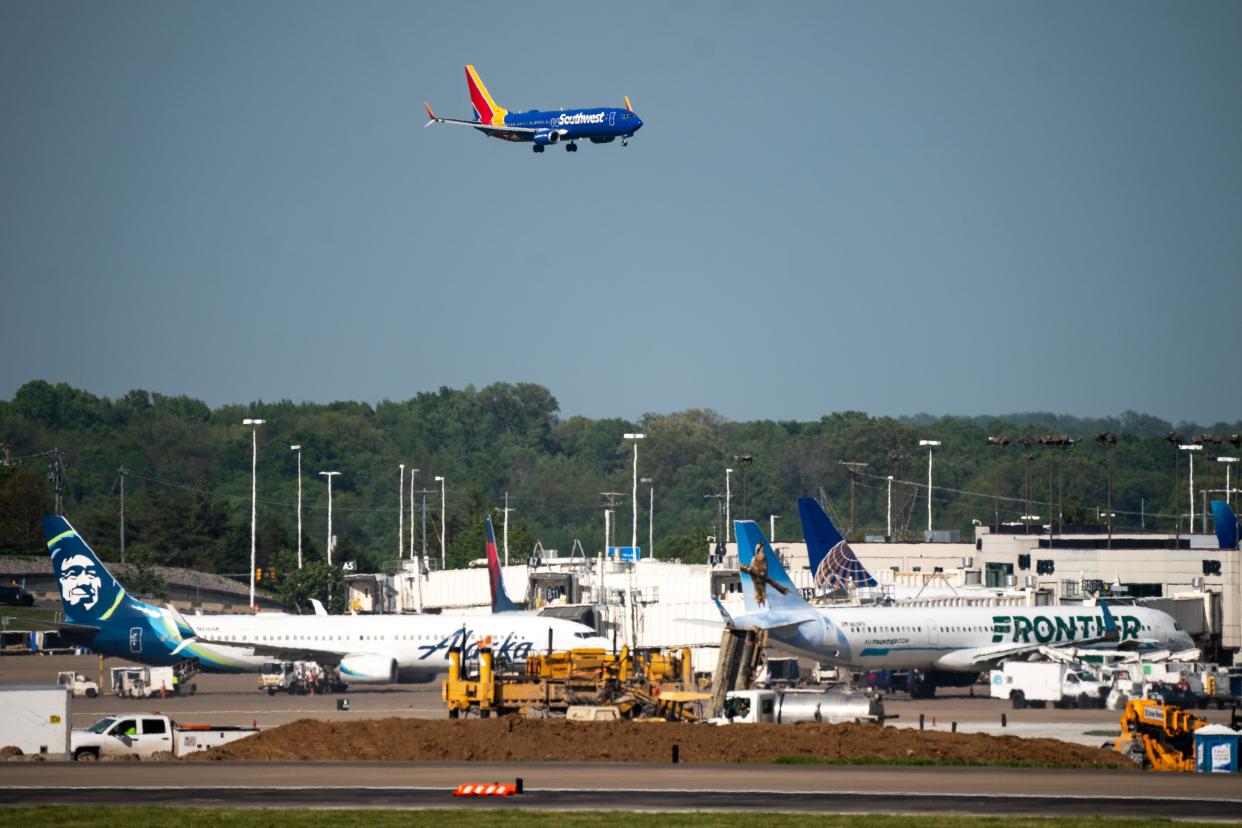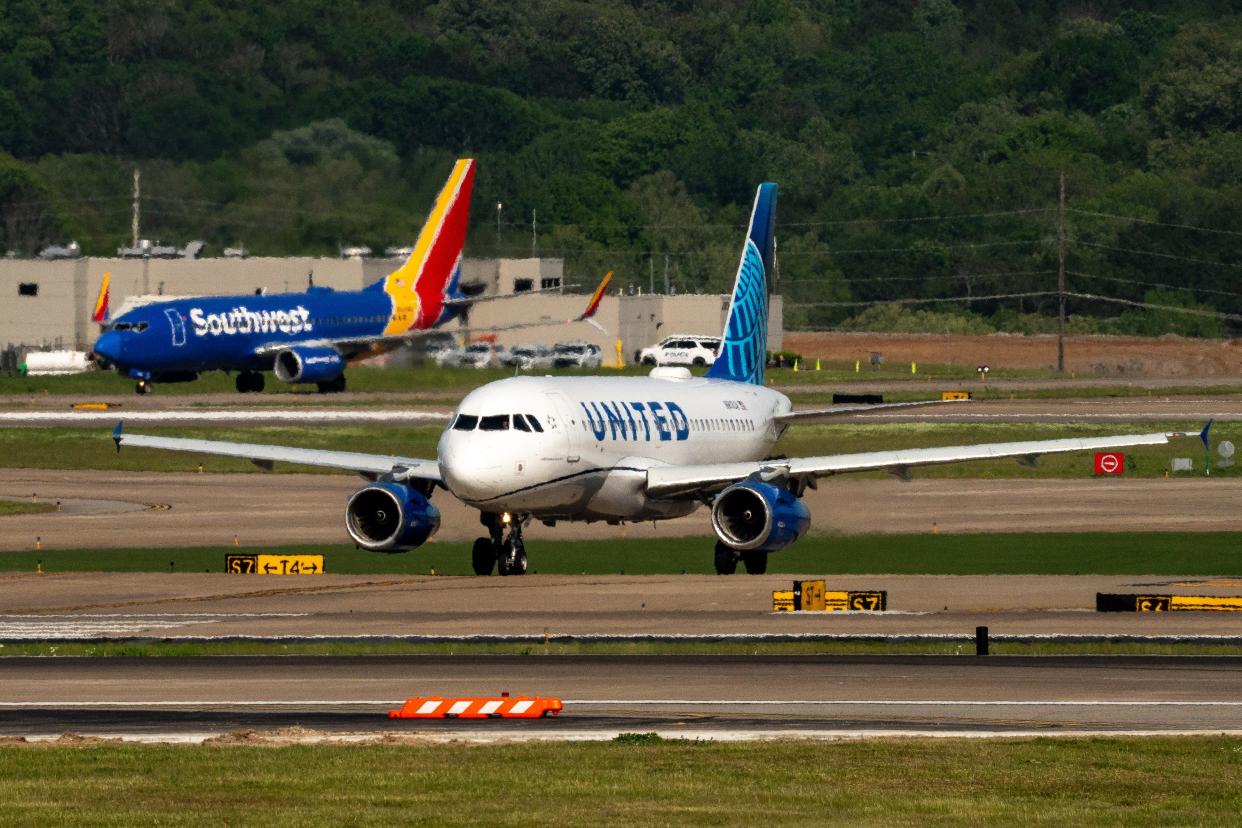Nashville to Asia: FAA studies need for airport runway extension to handle bigger aircraft
Tennessee's influence on the global stage has surged in recent years, bringing increased traffic on roads and at its airports.
But facilitating international connections to the Volunteer State isn't as straightforward as holding a virtual meeting or tuning into the latest country music hit.
Nashville International Airport is at the forefront of this challenge. As Tennessee gains global attention, airport leaders are working with state and local officials to upgrade infrastructure, broaden roadways and expand flight routes to welcome the world.
One of the most pressing and confounding issues: connecting Music City with destinations more than 7,000 miles away in Asia.
To achieve this, the Metro Nashville Airport Authority, in charge of airport operations, has devised a strategic plan. Its goal: construct the necessary infrastructure for direct flights to major Asian hubs like Tokyo and Seoul, South Korea.

However, the work can't begin until the Federal Aviation Administration is convinced of the necessity for a longer runway at the airport. The cost, which is unknown, is likely hundreds of millions of dollars.
The MNAA is racing against the clock, said Doug Kreulen, the Nashville International Airport's president and CEO.
"In 2024, we will hit almost 24 million passengers, but in 2034, we'll be at 35 million," Kreulen told MNAA board members earlier this month.
The crux of the authority's case lies in engineering studies it completed in recent years, showing the need for a longer runway capable of safely accommodating the heavy airplanes used for international flights. While the airport's current runways suffice for flights to Europe, they fall short — either in length or positioning — for the demands of extended routes to Asian metropolises.

Last year, a new and expanded International Arrivals Facility opened inside BNA's new terminal lobby. The MNAA is courting European destinations with incentives for desirable routes to France, Germany, Ireland, the United Kingdom and Reykjavik, Iceland, among others.
But, for Asian connections, the airport authority believes it first needs to extend runway 2L/20R — one of four BNA runways — by about 4,000 feet. It is currently about 7,700 feet long.
"Getting to these other hubs in Europe is not a problem and is all doable," Kreulen told board members in December, according to the meeting minutes. "Everyone keeps saying we want to get to Asia, which is 9,000 miles away. We do not want to go from Nashville to Chicago to get to Seoul or Tokyo. The vision for the city and state and for the future is nonstop service."
Demand for these flights is evidenced in the 26% growth in foreign-direct investment in Tennessee from 2016 to 2021, according to the Global Business Alliance, which lobbies for international companies in America. Japan is the largest international investor in the state, led by automakers and suppliers Nissan North America, Yorozu Automotive, M-Tek, Bridgestone Americas and Denso Manufacturing.
Germany, the U.K., France and Canada also have major presences in the Tennessee business community.
Nashville Convention and Visitors Corp. President and CEO Deana Ivey said a direct flight would also bolster Tennessee's tourism industry.
"Music has global appeal, and over the years we have worked with tour operators in Asia to promote Nashville," Ivey said. "A nonstop Asian flight would make Nashville even more desirable and give us the opportunity to attract visitors from new markets."
Tennessee Gov. Bill Lee and other state lawmakers have sought direct Asian service for years on behalf of businesses and international tourism.
"Attracting increased tourism from Asia is seen as a substantial area for growth," Lee wrote to airport authority members in 2021.
In 2022, the Tennessee Department of Economic and Community Development secured 18 foreign-owned projects in Tennessee, totaling $5 billion in capital investment.
Extending Runway 2L/20R
Behind the scenes, the FAA is actively collaborating with the airport to evaluate the proposed runway 2L/20R extension project. This includes a comprehensive Environmental Impact Statement assessment involving a thorough Runway Extension Justification Study coupled with an evaluation of potential impacts on natural resources and the surrounding environment. Once these studies are finalized, the FAA will "determine if a project is justified, the length of the extension and the appropriate National Environmental Policy Act evaluation," an agency spokesperson said.
That process could take up to two years. Airport leaders, who want to move as fast as possible, have developed a tentative timeline to build the runway so they are prepared if and when the FAA signs off on their plan.
In the MNAA's proposed budget slated for approval in May, more than $60 million is estimated to be needed to enable the runway extension and prepare design plans in 2026 and 2027.
Runway construction could begin as soon as 2028 if the FAA agrees. The proposed budget includes plans for $30 million in site preparation in 2028.
Enabling projects include demolition of existing buildings and new aircraft rescue and firefighting facilities.
The runway justification study began this month and will continue through September, airport officials said. That will be followed by community outreach about the construction impacts.
Before construction can start, buildings located between the airport's southern campus and Murfreesboro Pike must be cleared. Those include the historic mansion housing Monell's at the Manor restaurant, which recently closed in anticipation of demolition — despite community protests over the beloved eatery. Nineteen homes in a mostly vacant subdivision must also be razed, while the airport must relocate the former Central State Hospital graveyard, where at least 137 former patients were buried in the early 1900s.
"If we keep growing to get to 396,000 annual operations, FAA recommends being in development of the next runway or you will start seeing degradation in service, long lines of jets waiting to take off and all that," Kreulen told the board in December. "We are tracking our runway use so that we can make good business decisions on a runway extension or a fifth runway, or both. Runways are what we need for nonstop service to different places."
Sandy Mazza can be reached via email at smazza@tennessean.com, by calling 615-726-5962, or on Twitter @SandyMazza.
This article originally appeared on Nashville Tennessean: FAA collaboration key to Nashville airport runway expansion plans